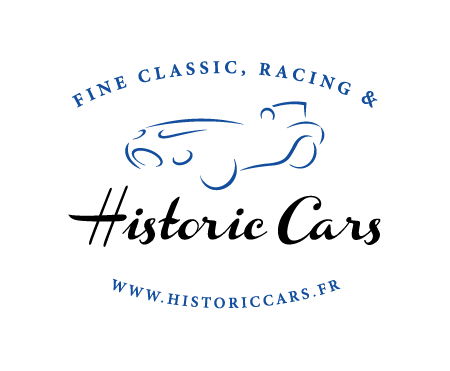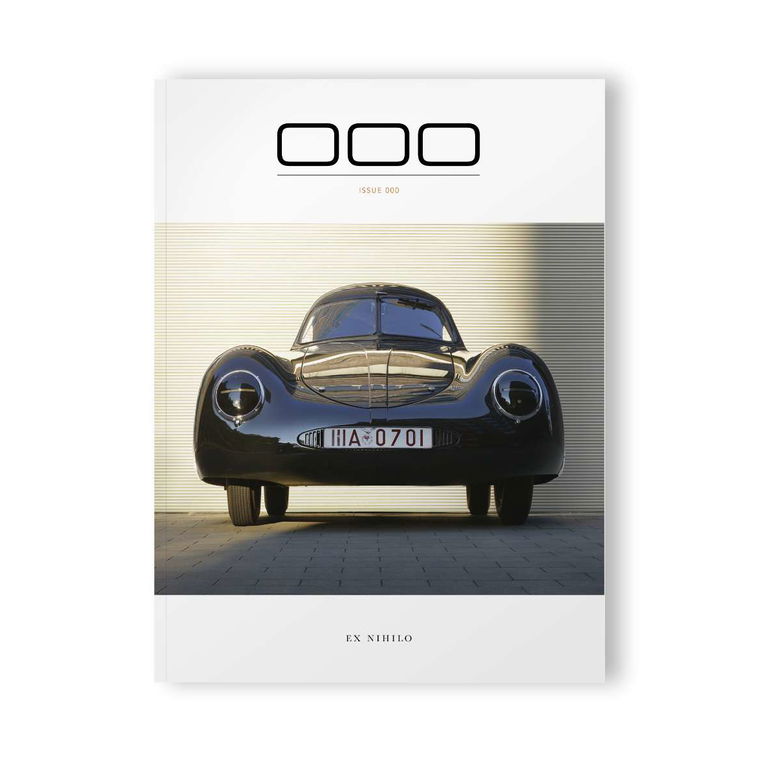On June 8, 1948, the prototype with chassis number 356-001 was homologated.
The first Porsche, a roadster with a Volkswagen engine, was born. „Among all the existing models, I could not find the car of my dreams, so I decided to build it myself“, Ferry Porsche would later tell…
After the war, work resumed in the Porsche design office in 1946 under the responsibility of designer Karl Rabe. The company, initially based in Stuttgart, was temporarily domiciled in Gmünd, Austria, due to the American occupation of its German factory. Inspired by Cisitalia, the idea of building its own sports car occupied all of Porsche’s thoughts, especially since despite the crisis in Germany, Volkswagen was resuming its production. It was in 1947 that the first Porsche was conceived, with a first prototype completed in July 1947. The dream became reality on June 8, 1948 with the official homologation.
Porsche has just realized its first sports car…
Ferry Porsche had set himself the goal of building a small sports car with an advantageous weight/power ratio and an affordable price. This very first Porsche had a slightly modified VW 4-cylinder flat engine in a central rear position (the first steps of the Boxster!) as well as an all-aluminium body on a tubular chassis. The Porsche 356 was presented at the 1949 Geneva Motor Show, one year after the presentation of the 356 prototype. With 500 orders received at the Geneva show, the Porsche workshops in Gmünd, Austria, quickly proved too small. 46 cars commonly known as „356 Gmünd“ (23 coupes and 23 convertibles) were produced there between 1948 and 1951. As the Stuttgart factory was still occupied by the American army, Porsche had to subcontract the production to the coachbuilder Reutter. The cabriolet was entrusted to Heuer. The 356 abandoned the tubular chassis of the prototype for a more classic self-supporting body. The engine was moved to the rear and now has the famous overhang that the 911 will inherit. The real series production of the 356 started in 1950 in Zuffenhausen, a district of Stuttgart. For reasons of cost and convenience, steel replaced aluminum for the bodywork and the car gained 100 kg in weight. This is the main difference between the 356 „Gmünd“ and the 356 „Stuttgart“. With 800 kg, the 1100 coupe already weighs more than 200 kg more than the first Porsche prototype while its engine has evolved very little. As Ferdinand Porsche had wished, the 356 still borrows many mechanical elements from the Volkswagen Beetle, including a steering that lacks precision, a cable-operated drum brake that is not very efficient, a 4-speed gearbox that is not synchronized and a small 1L1 engine that is very limited in power (40 hp at 4000 rpm) but particularly noisy! The 356’s driving experience will nevertheless seduce driving and sensation lovers, its good aerodynamics allowing it to reach 140 km/h in top speed. Its natural tendency to oversteer due to the extra weight on the rear axle gives it a strong temperament that will establish its reputation for sportiness. At the same time, the success of the Porsche 356 in competition built the Porsche legend, notably at the 24 Hours of Le Mans in 1951 with a class victory. That same year, all production returned to Zuffenhausen.
Aware of the weight gain of his car, Porsche offers from April 1951 an evolution of engines: A 1300 cc then a 1300 S version (adapted to the Super) comes to top the range with a power of 60 hp at 5500 rpm. The 1300 also inaugurates the new in-house synchronized gearbox and hydraulic brakes. The Porsche 356 Roadster America marks the year 1952 as the first steps of Porsche on the American market, very demanding of sports cars. The roadster is a quasi-racing car and weighs only 750 kg. It also introduces a new displacement evolution to 1500 cm3 which increases the power to 70 hp. Succeeding the short-lived Roadster America, the Porsche 356 Speedster will quickly become a best-seller of the brand in the USA. In 1953 the coupe and convertible adopted the 1500 engine. Completed in 1954, the Speedster is a new derivative of the 356 convertible and will be available with 1300 and 1500 engines, in normal or „super fuel“ versions (1300 S and 1500 S).
Porsche continues to develop its sports car and the year 1960 is the beginning of the third episode in the life of the 356. Porsche opened its third factory and to support the success of its model, the small manufacturer, faithful to its philosophy of continuous progress, brings some novelties to maintain the 356 among the best sports cars in this beginning of the 60’s. The 356 B offers a better visibility and a greater luminosity with a larger glass surface. At the front, the headlights are mounted higher, and the fenders become more prominent. The new ogive-shaped turn signals characterize the 356 B. Under the bumper, there are two new air inlets for better cooling of the brakes. On both the coupe and the convertible, the exterior mirror is no longer attached to the front fender but to the door. Finally, the chrome trim on the hood is wider at the bottom. The soundproofing is reinforced in the cabin, which gains new seats that are more enveloping and comfortable. The rear seat has a two-piece folding backrest..
The ultimate evolution of the Porsche 356, the C model was presented at Frankfurt in 1962, just one year before the year in which the new Porsche 911 made its appearance. The various versions of the 1600 received a number of improvements in cooling and alloys to optimize reliability. The 356 C looks more attractive than ever, despite its 15-year career! Aesthetically, it adopts new rims but retains all the lines of the 356 B. The new hubcap design reflects the fact that all 356s are now fitted with disc brakes as standard. In the cabin, there’s no revolution either, as the dashboard is simply slightly modified. The seats are more welcoming, and the driving position has improved slightly.
The 1600 SC (Super C) replaces the 1600 S 90. With 5 extra bhp, a reinforced clutch, an optional autoblocker and Koni shock absorbers, the SC remained the last sporty version of the Porsche 356 until the model was discontinued in 1965.



























